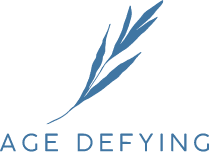You’ve probably come across the tretinoin and retinol if you’re a skin-care junkie intent on preserving as much youthfulness as possible or undergoing acne treatment. Retinoids are pretty effective at softening wrinkles and skin imperfections. Ok, but what exactly are retinoids? What’s their mechanism of action? Continue reading to find out more about this popular ingredient.
Retinoids were first introduced in 1971 to treat acne, psoriasis, wrinkles, and skin cancers. The first product to hit the market was Retin-A (tretinoin). It was initially for acne treatment, but people soon found out it did more than clear pimples. It promotes cell turnover and fades dark spots on the skin.
What Are Retinoids?
A retinoid is a group of compounds that derive from vitamin A and thus, possess structural and functional similarities to this vitamin. These can be natural or synthetic and include many types and forms, such as retinol, retinal, and retinyl esters.
Tretinoin and retinol are common active ingredients in oral and topical medications and cosmetic products with bioactive ingredients due to their positive effect on skin appearance. The topical forms are available as creams, gels, and liquids, and you apply them directly to your skin. In turn, oral retinoids may come as tablets or capsules.
Weaker forms of these formulations are available over-the-counter, but the potent retinoids treat acne, psoriasis, pigmentary disorders, and certain types of skin cancer, although these often irritate.
These substances also play a massive role in the immune system, especially regarding skin health. They can unclog pores, decrease the appearance of wrinkles, regulate the growth of cells on the skin's surface and reduce inflammation.
Retinol Products We Love
-
$31.99 ($1.07 / Fl Oz)Buy Now
by Medix 5.5
We earn a commission if you make a purchase, at no additional cost to you.
03/08/2024 10:38 am GMT -
$29.99 ($0.94 / Ounce)Buy Now
by Advanced Clinicals
We earn a commission if you make a purchase, at no additional cost to you.
03/08/2024 10:49 am GMT -
$17.99 ($1.12 / Ounce)Buy Now
by NATUREWELL
We earn a commission if you make a purchase, at no additional cost to you.
03/08/2024 11:07 am GMT
Types of Retinoids
As we said above, retinoids are vitamin A derivatives. The cosmetic industry uses tretinoin and retinol in all sorts of products to help reduce acne vulgaris, sun damage, wrinkles, and other signs of aging.
Both retinoids are topical skincare products that can treat the same conditions. Both promote peeling, which leads to exfoliation and stimulates collagen and elastin responsible for smoother-looking skin. They’re not quite the same, though. Let’s pitch them together, tretinoin vs. retinol, to find out their difference.
The Difference Between Retinol and Tretinoin
Tretinoin
Tretinoin is a common medication prescribed to treat acne and damaged skin. It won’t reverse deep wrinkles but can improve them on the surface and fine lines and fade dark spots. Also known as retinoic acid, the generic name for synthetic vitamin A, tretinoin is available under many different brand names. Retin-A is one of the most common, and it doesn’t contain retinol.
It may seem weird, but tretinoin promotes skin peeling by irritating it, so it speeds up the life cycle of the cells by making them divide and die faster so newer cells can replace them.
The most common names tretinoin is sold under are Altreno, Atralin, Avita, Refissa, Rejuva, Renova, Retin-A, Stieva, Tretin-X. It’s also available in formulations that contain other ingredients: Solage, Tri-Luma, Veltin, and Ziana, among them. These products often contain antibacterial ingredients for the treatment of acne.
Furthermore, tretinoin is an old topical skin treatment, and people have been using it to treat mild to moderate acne for about fifty years. Some studies reveal it can reduce inflammation associated with acne, prevent follicular plugging, and exfoliate the skin.
In addition, a 2017 review indicates there’s clinical data to back the effectiveness of topical retinoids in acne, both inflammatory and noninflammatory. The regular use of tretinoin may help apparent existing acne outbreaks and reduce their number and severity.
According to other studies, tretinoin can improve the health of sun-damaged skin and fine lines and wrinkles. It can also improve skin texture and tone and fade dark spots.
Always discuss the specifics of your skin condition with your doctor or dermatologist and let them tell you the best options for you. Be sure to mention if you’re pregnant or plan to be or if you’re breastfeeding. The information on whether this substance is safe during pregnancy or if it can filter into the milk is limited so ask them to explain the potential harms and benefits to make an informed decision.
Another thing you want to mention is your degree of sun exposure and a list of prescription or over-the-counter medications you’re currently taking, even if they’re topical. Your doctor needs to hear as they could impact the effects of tretinoin.
Be sure to find out the proper way to use it, how long you need to use or take it, and its typical side effects. Find out any symptoms that indicate you should stop using it.
The most common administration route of tretinoin is topical on a freshly washed face with no makeup. You don’t have to scrub it or anything like that. A gentle wash will suffice. You must wait 20-30 minutes before applying it once a day, preferably before bed.
You do it by squeezing about half an inch or less of the cream on your fingertips and applying it to the specific areas on your skin you want to treat. The cream or gel will fade into your skin right away, but if it doesn’t, it only means you’re using too much of it, so use less of it on your next application. It’s pretty tempting to believe that using more tretinoin or applying it more than once a day will improve the results, but it’ll only irritate your skin.
Note that tretinoin is for topical use, so be careful not to get it in delicate areas like your nose, mouth, eyes, and mucous membranes. Also, avoid or minimize your exposure to extreme temperatures, sunlight, tanning lamps, harsh cosmetics, those that dry the skin in particular, and anything that can negatively interact with tretinoin like astringents, alcohol, etc. citruses, and certain spices.
You’ll notice the effects of tretinoin in about 2-3 weeks, although it could take up to 12 weeks. However, use it less frequently if you don’t see any improvement within this period and run it by your doctor. Also, stop using this substance if the irritation persists after a few weeks or if you have side effects such as blistering, persistent or worsening irritation, crusting, excessive redness and swelling, and any changes in your skin color.
As we mentioned above, tretinoin will irritate your skin, especially when you first start using it, so itching, peeling, moderate redness, and dryness are typical to a certain degree. They’ll decrease as soon as you adjust to the substance.
As you can see, tretinoin is a safe, effective treatment for acne that also helps reduce the appearance of surface wrinkles and dark spots.
Retinol
It is one of the best-known skincare ingredients currently on the market. It’s an over-the-counter retinoid, a derivative of vitamin A, used in anti-aging products and those that can treat acne.
As you can imagine, an over-the-counter retinol product isn’t the same as a prescription retinoid, and the latter is more potent. It’s, however, the strongest over-the-counter version compared with retinaldehyde and retinyl palmate, other retinoids. This substance has many potential skincare benefits but consider the side effects.
Retinol is different from tretinoin because it doesn’t remove dead skin cells. Instead, its small molecules go deep, beneath the outer layer of skin, into the dermis. Once there, it helps neutralize free radicals, which boosts the production of collagen and elastin, plumping the skin and reducing the appearance of wrinkles, fine lines, and enlarged pores.
This substance decreases acne-related scarring, but the actual condition requires prescription tretinoin. The doctor may prescribe another acne treatment for inflammation and bacteria.
In addition, retinol has an exfoliating effect on the skin, so it helps improve texture and tone. As we already mentioned, it can decrease the appearance of wrinkles, expression lines, and sunspots, but it can also even skin texture and other hyperpigmentation.
You must use it every day to obtain maximum benefits, and several weeks will go by before you see a significant improvement.
As you probably already know, the Food and Drug Administration approving retinol doesn’t mean there are no side effects. Those who use retinol often experience dry and irritated skin, especially initially. Thus, try using it every third night and work your way up to nightly to see if these side effects go away.
However, always talk to your dermatologist if you’re concerned about the degree of irritation. You might want to speak to them before you start using it. Some harmful side effects include acne or eczema flare-up, skin discoloration, UV light exposure, swelling, blistering, and stinging. Note that applying retinol half an hour after washing your face is excellent for reducing irritation.
In addition, use only one retinoid product at a time as your risk for side effects increases when you use two or more. Always read the product labels, especially if you want to use a combination of those labeled as anti-aging and for acne, as they likely contain retinol. Also, always apply this substance at night to avoid sun or light exposure, as it may worsen some of the drying and irritating effects of retinol, according to the Skin Cancer Foundation.
Sun exposure puts you at risk of age spots and wrinkles, the exact reasons you may be using retinol. You can, fortunately, reduce those risks by wearing sunscreen when you’re outside. Using this substance could also worsen eczema and rosacea, so don’t use it if you suffer from any. In addition, consult your doctor about the risks of retinol if you’re pregnant or are planning to be shortly.
The proper way to apply retinol is to wash your face, dry it, and apply retinol. Then, apply a moisturizer after a few minutes. Finally, always do a patch test before using any new substance on your face.
So, what are the main differences between tretinoin vs. retinol? Retinol is an over-the-counter natural form of vitamin A that’s milder and less irritating to sensitive skin. At the same time, tretinoin is a synthetic version of vitamin A that’s stronger than retinol and, thus, only available with a prescription and not suitable for sensitive skin.
Retinol Products We Love
-
$31.99 ($1.07 / Fl Oz)Buy Now
by Medix 5.5
We earn a commission if you make a purchase, at no additional cost to you.
03/08/2024 10:38 am GMT -
$29.99 ($0.94 / Ounce)Buy Now
by Advanced Clinicals
We earn a commission if you make a purchase, at no additional cost to you.
03/08/2024 10:49 am GMT -
$17.99 ($1.12 / Ounce)Buy Now
by NATUREWELL
We earn a commission if you make a purchase, at no additional cost to you.
03/08/2024 11:07 am GMT
The Benefits of Retinoids
These medications have complex mechanisms of action that are responsible for the benefits. These include the unclogging of blocked pores, the regulation of the development of cells on your skin surface, a reduction in inflammation, an increase in the production of procollagen (the precursor to collagen), and the slowing of skin aging due to UV light exposure.
In short, retinoids have many cosmetic and dermatology applications, and the most common is the treatment of mild to moderate acne. These substances unclog pores and allow topical antibiotics to get inside. And actions can help eliminate acne-causing bacteria.
Other uses include skin aging, psoriasis, pigment anomalies, and certain types of skin cancer. One of the most concerning side effects of retinoids is the potential risk of congenital disabilities, so pregnant women or those who intend to be soon should avoid it, the oral form of it in particular. Furthermore, they should wait two months to three years after this treatment before getting pregnant, although the length of time depends on the type of retinoid they use.
In addition, you should refrain from donating blood if you’re taking oral retinoids. Other adverse effects include the potential risk of developing a mental health condition, abdominal pain, nausea, diarrhea, muscle, joint, and bone pain, headaches, and even loss of night vision.
The Structure of Your Skin
The skin is the largest organ of your body and measures approximately 20 square feet. The function of this organ is to protect you from bacteria and the elements. It regulates your body temperature and allows you to feel sensations.
The skin has three layers. The epidermis is the outermost layer of skin that functions as a waterproof barrier and the skin tone everyone sees. Your actual skin's color is from special cells called melanocytes. These are in the epidermis and produce melanin, a pigment.
The Epidermis
As we said above, the skin has several layers, and the epidermis is keratinocytes. These make up around 95% of the epidermal cell population and produce keratin. They're the primary structural cells of the epidermis, which doesn't contain blood vessels and is entirely dependent on the dermis beneath it for nutrient delivery and waste disposal. The other cells are melanocytes, Langerhans, and Merkel.
Furthermore, the primary function of this layer of skin is as a physical and biological barrier to the external environment. It keeps irritants and allergens from entering the body. It also prevents the loss of water. Furthermore, most body parts have four layers of skin, although the thickest parts have five.
The first layer is the Stratum corneum, also known as the horny layer. There are the Stratum granulosum or granular layer, the Stratum spinosum or prickle cell layer, and the Stratum basale or germinative layer. The fifth layer is the Stratum lucidum, the thick skin in the palms of your hands, your feet, and on your digits.
The Dermis
The dermis is right between the basement membrane zone and the subcutaneous layer. It's the inner layer of your skin and way thicker than your epidermis, as its central role is to sustain and support it. Its main functions are to protect you by cushioning the deeper structures. It also nourishes the epidermis and plays a vital role in wound healing.
The interlacing connective tissue network is collagen and its major component, elastin. This layer contains specialized mast cells, fibroblasts, and structures like blood vessels, lymphatics, sweat glands, and nerves. The dermis has two layers: the superficial papillary and the deeper reticular dermis.
The first is the thinner layer and consists of loose connective tissue containing capillaries, elastic fibers, and collagen. The reticular dermis has a thicker layer of dense connective tissue that contains larger blood vessels, closely interlaced elastic fibers, and thicker bundles of collagen. It also contains fibroblasts, mast cells, nerve endings, lymphatics, and epidermal appendages.
The Hypodermis
Finally, the hypodermis is the subcutaneous layer. It's right below the dermis and made of fat. It's the primary structural support for your skin and acts as an insulator from extreme temperatures and shock absorption. It intertwines with your blood vessels and nerves.
In Conclusion
Now you know the difference between the prescription-strength retinoid-tretinoin vs. retinol, and, as you can see, their anti-aging benefits have a well-deserving reputation because they work. According to happy customers, their effects on the skin are also well-documented and backed by scientific data.
Your skin is your barrier between the outside world and your inner self. It keeps out bacteria and other harmful elements, so it protects you from illness. So, be good for your skin by using the right skincare product. You’ll wear it forever. Take good care of it, and you’ll never have to wear makeup.













